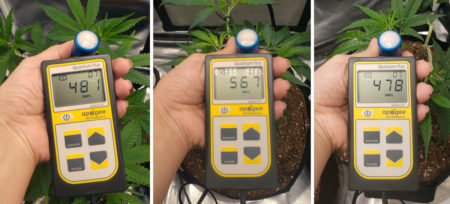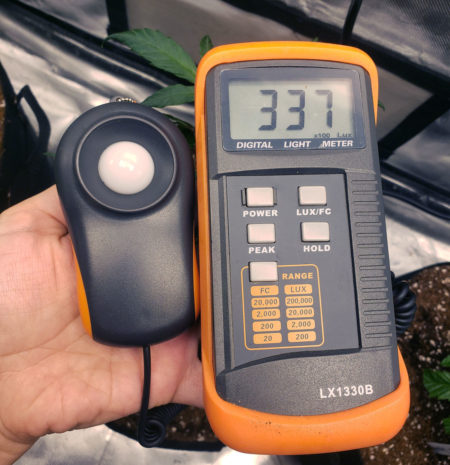by Nebula Haze
PAR vs ePAR Meters: Does it matter?
PAR (short for “Photosynthetically Active Radiation”) describes the spectrum of light/radiation that can be used by plants for photosynthesis. Typically PAR is defined as the light spectrum between 400 to 700 nanometers. You’ve probably seen a light spectrum PAR chart before.
Traditional PAR Chart
A “PAR meter” directly measures how much light is being delivered in this range. This range is roughly the same as the range of visible light for humans, but not exactly the same. That is why a PAR meter is considered more accurate than a “lux” meter when it comes to plants. “Lux” and lux meters are designed to measure the light humans can see with our eyes, while a PAR meter measures how much light the plant can use for photosynthesis.
So where did ePAR meters come from?
Newer research by NASA (as well as commercial cannabis growers) demonstrate that plants can actually photosynthesize light in the 700-750nm (far red) range, too. That’s why new PAR meters measure between the range of 400-750nm and are called “ePAR” meters.
An ePAR meter measures light all the way up to 750nm, while a regular PAR meter only goes to 700nm.
ePAR meters measure between 400-750nm, the known spectra of light that cannabis plants use for photosynthesis. Apogee Instruments MQ-610 is one of the best ePAR meters, but costs almost $600. Definitely meant for the dedicated grow scientist or commercial grower. But I have to admit, an Apogee light meter is really fun and interesting to use even for a hobbyist like me. The following picture shows the light levels differed in one tent at different places under a Spider Farmer SF-2000 LED grow light. I was able to see that it delivered significantly more light to the middle than the plants on the sides.
PAR and ePAR meters are expensive, and unnecessary to get great results growing weed. Even with a PAR or ePAR meter, you still need to look at your plants and try to keep lights as close as possible without light stress. Your plants may be able to use more or less light than expected. PAR meters are good for helping you record the light levels for future reference, and see how light levels change throughout your grow space, but not as good for telling you “keep your grow lights at this particular level” because that changes a lot from plant to plant and environment to environment. However, you can record much of the same information with a $35 lux meter.
Do cannabis growers need an ePAR or PAR meter? Probably not.
A $35 lux meter is a fraction of the cost of a PAR or ePAR meter, and almost as helpful for cannabis growers when used properly.
Learn more about using a lux meter with cannabis plants.



